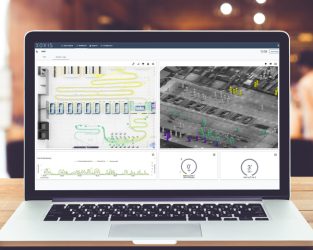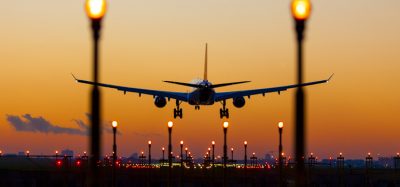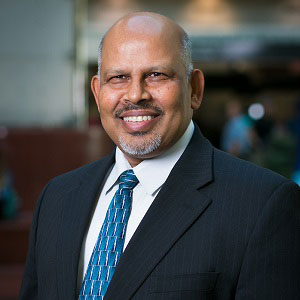Why Xovis doesn’t use LiDAR
Posted: 17 November 2025 | | No comments yet
Why not LiDAR? Because Xovis sensors were designed for the challenge. Purpose-built AI tech ensures accurate, dependable passenger flow insights airports rely on. Christian Studer, Xovis Co-Founder and CEO explains more for International Airport Review.


“Because it’s not the best technology for solving the challenge” is a simple response to many, sometimes complex, questions. It’s the one I have been offering to a question that is being asked more frequently: “Why is Xovis not using LiDAR sensors in its Passenger Flow Management System?”
That simple response doesn’t always satisfy the curiosity of the person asking the question (although, to be honest, a lot of the time it does). And it may not be enough for those reading this article, which is why I’ve decided to go a bit deeper into what that statement means and why it is important for airports already working with, or those considering, a passenger flow management solution.
A question of mothers
For some, “Necessity is the mother of invention” is a statement describing the best approach to problem solving. For others, “Invention is the mother of necessity” is a more apt phrasing. Both may be right, depending on the case, and there is no shortage of good examples of the latter—microwaves and LASIK surgery, to name a few.
Xovis was founded in 2008 to solve a real and costly problem at airports: accurately measuring wait times. It was a problem that technologies already being used in the terminal space, like CCTV and Wi-Fi/Bluetooth tracking, couldn’t adequately address.
From that starting point, Xovis co-founders and I developed AI-powered sensors specifically tailored to the airport environment. Our success to date—over 120 airports and more than 700 airport touchpoints—is precisely because Xovis technology and passenger flow solutions were developed for and remain responsive to airport operators’ challenges.
Xovis was developed to solve a specific need. LiDAR sensors are off-the-shelf tech looking for applications. That’s not necessarily a bad thing. But there are cases, and people flow management is one of them, where the technology is inferior to leading, purpose-built tech in the market.
A question of vinyl and MP3
That LiDAR is a powerful technology, and that there are some use cases in airports where it makes sense, is not disputed. We’ve seen some terminals use LiDAR to measure the flow of auto traffic at the drop-off and pick-up areas or for perimeter security. It works well enough in those settings, where occlusion is not much of an issue.
But in terminals and queues, where the risk of occlusion is high, LiDAR too often misses counts. The result is inaccurate counts, inconsistent data, and difficult remote validation. For terminal operators relying on KPIs to make capacity decisions or as the justification for Service Level Agreements, the consistency and accuracy of the raw data are not just nice to have—they are crucial.
When operators tell me they are experimenting with LiDAR, I cannot help but think of vinyl records.
Most people, me included, I must admit, mainly consume music these days as MP3 files. The advantages of MP3 were convenience, cost-efficiency, and tailored experiences. True, they are easier than lugging around a record player, but also, depending on your streaming service, more expensive and delivering a lower-quality sonic experience.
The data that gets stripped to make an MP3 may not matter when it’s used for a jogging playlist, but the equivalent in using data for decision-making in airports is a different story. Solving airport challenges in the long run comes down to capturing and making use of more and better raw data. The airports who understand why this is critical, and why LiDAR falls short, already choose Xovis.
A question of value
Competition is good, and industries need disruptors to keep market leaders on their toes. Being a global leader in people and passenger flow management means staying ahead of the competition, which Xovis does by constantly investing in better products and services.


We are confident that our stereovision sensor-based solution continues to be the best for addressing passenger flow issues in airports. We have confirmed that for ourselves by testing Time of Flight, LiDAR, and Radar. The conclusion was clear: the accuracy and AI capabilities of Xovis sensors make them the best to address airports’ current and future challenges.
Our technology is purpose-built to solve passenger flow challenges, but it’s not the best fit for every airport use case. For example, Xovis tech is not optimal for tracking individual assets and can’t measure aircraft turnaround process times, to name just two. By saying no to certain things, we deliberately say yes to doing everything related to passenger flow exceptionally well.
Xovis has an amazing team of researchers who are releasing new products and features on a regular basis. The development of features that are simply not possible on LiDAR’s point cloud system is aligned with our goal to keep the total cost of ownership of our solution low. That goal is easier to reach when the underlying hardware lasts decades, not seven years.
Our focus on purpose-built tech and industry-tailored solutions is no longer limited to airports. There are now nearly 700,000 Xovis sensors being used to improve people flow around the world in retail, public spaces, office buildings, aboard buses, trains, and the stations that serve them, and many other places. Privacy-compliant data from our sensors is helping retailers improve commercial success, facility managers make buildings smarter, and event managers’ mega-gatherings safer.
The coming year will see some big developments in terms of price, coverage, and Machine Learning features. We are looking forward to the future and invite you to discover for yourself why people say: The more you know about passenger flow, the more you want Xovis. Take a look at our video: https://youtu.be/wZjrVkqcJCA


















